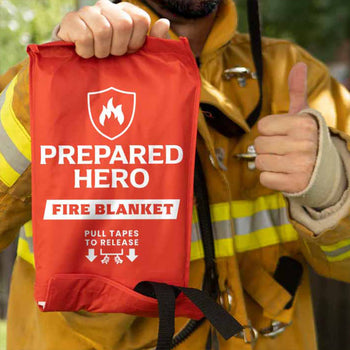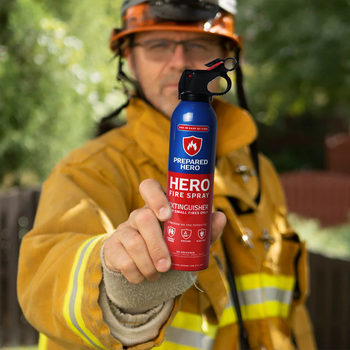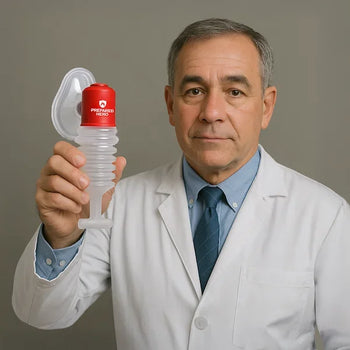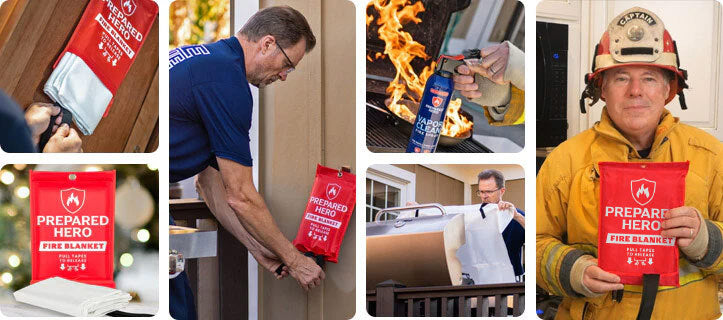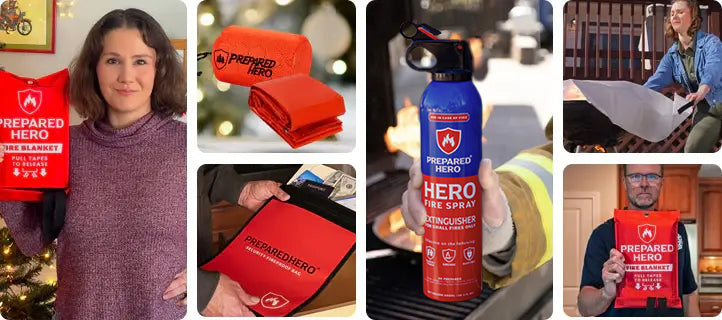Where you put your smoke detectors matters just as much as installing them. Proper placement makes sure they can detect...
Hydraulic fluid keeps machines running smoothly, but it is risky. Whether you're dealing with forklifts, vehicles, or heavy machinery, knowing if hydraulic fluid is flammable matters.
If you’ve been wondering about this useful substance, you’re in the right place. In this guide, we’ll walk you through what hydraulic fluid is, whether it’s flammable or not, what temperatures it might ignite at, and how to reduce fire risks.
What is Hydraulic Fluid?

Hydraulic fluid helps machines work by moving power through a system. You’ll find it in machines like forklifts, backhoes, airplanes, and cars. It's not just about movement, though. This fluid also keeps everything cool, reduces wear and tear, and helps parts last longer.
Plus, hydraulic fluid doesn’t compress like air. This means it can transfer force more reliably. When pressure is applied, the fluid pushes through hoses and parts, helping machines lift, steer, or press with precision.
There are different types of hydraulic fluids: mineral oil-based, synthetic, water-based, and biodegradable. Each has its own strengths depending on the machine and the job. Additives are added to improve performance, like reducing rust or keeping the fluid thick enough at different temperatures. You might also hear people call it hydraulic oil, but not all hydraulic fluids are oils. Some are water-based or synthetic.
The bottom line? Hydraulic fluid is essential. Without it, many of the machines we rely on daily wouldn’t function properly. Whether it’s helping your car’s brakes work or keeping a forklift's controls smooth, hydraulic fluid keeps the system running.
How Flammable Is Hydraulic Oil?

Hydraulic oil can catch fire, but how easily it burns depends on the type. Mineral oil-based fluids are flammable, while water-based fluids are much safer because they have more water in them. So, not all hydraulic oils burn the same. Some are riskier than others. Here’s a quick look at the different types and how their ignition points affect safety and performance:
1. Mineral Oil-Based Hydraulic Fluid
- Flash Point: 200 to 250°F (93 to 121°C)
- Fire Point: 400 to 500°F (204 to 260°C)
- Flammability: High
These are the most flammable types of hydraulic fluids. They're used a lot in machines because they’re cheap and easy to find. However, they ignite at lower temperatures, which makes them risky in places with heat, sparks, or flames.
Mineral oil-based hydraulic fluids are widely used in manufacturing and heavy machinery. If you use this type, you need regular maintenance, proper temperature control, and flame arrestors. Never use them in high-heat areas without protection.
2. Synthetic Hydraulic Fluid
- Flash Point: 300 to 450°F (149 to 232°C)
- Fire Point: 500 to 600°F (260 to 316°C)
- Flammability: Not flammable, but combustible
Synthetic fluids are made to handle higher temperatures. They don’t catch fire as easily as mineral oils, which makes them a better choice for high-performance systems, like aircraft or advanced machinery.
Synthetic hydraulic fluids are used in aerospace, aviation, and high-tech industrial settings. They’re safer than mineral oil-based ones, but not fireproof. You still need to manage heat levels and keep the system clean.
3. Water-Based Hydraulic Fluids
- Flash Point: 300 to 400°F (149 to 204°C)
- Fire Point: 450 to 550°F (232 to 288°C)
- Flammability: Not flammable, but combustible
As the term implies, this type has a lot of water in it (30 to 50%), which means they’re the least likely to ignite. They’re used in mining, steelmaking, and any job where flames or hot surfaces are common.
While they’re safer, they can wear down your system if you’re not careful. Given this, watch out for corrosion, water balance, and leaks.
4. Biodegradable Hydraulic Fluids
- Flash Point: 300 to 450°F (149 to 232°C)
- Fire Point: 450to 600°F (232 to 316°C)
- Flammability: Not flammable, but combustible
These are made from vegetable oils or synthetic esters. They're better for the environment and don’t burn as quickly as mineral oils. However, they can still catch fire if they get too hot.
Biodegradable hydraulic fluids work best for agriculture, forestry, and marine operations where leaks could harm nature. While generally safe, they still need to be carefully handled like the other types. Monitor temperatures, maintain the system, and check for wear.
How Hazardous Is Hydraulic Fluid?

Yes, hydraulic fluid is hazardous, especially if you’re not careful. Not all types ignite easily, but mineral oil-based fluids can easily catch fire if they’re exposed to sparks or high heat. For instance, welding near a hydraulic system means there’s a real chance for the fluid to heat up, release flammable vapors, and ignite if those vapors come in contact with an open flame or spark.
On top of that, burning hydraulic fluid can release toxic fumes that are dangerous to breathe. Inhaling the smoke may cause headaches, dizziness, or even long-term damage to your lungs or nervous system. It’s not just the fire you need to worry about; it's what’s in the smoke, too.
Hydraulic fluid can also be harmful to your skin and eyes. Some types are even toxic if inhaled or swallowed. Worst case, a high-pressure line can inject fluid under your skin and send you to the hospital.
If you need to weld near hydraulic equipment, shut down the system, release the pressure, and clean up any leaks first. Remember, safety gear, good ventilation, and some preparation go a long way in keeping you safe.
Is Hydraulic Fluid Flammable When Welding?
Yes, hydraulic fluid can be flammable and a significant fire hazard when welding, especially mineral oil-based fluids. The high temperatures and potential for leaks during welding can easily ignite hydraulic fluid.
Plus, atomized hydraulic fluid can travel up to 12 meters from the leak source. Hot surfaces within this range (e.g., heated or molten metal, electric heaters, open flames, and welding arcs) are potential ignition sources that could result in a severe fire.
Is Hydraulic Fluid the Same as Hydraulic Oil?

Hydraulic fluid and hydraulic oil are often used like they mean the same thing, but they’re not exactly the same. Hydraulic oil is just one type of hydraulic fluid. Think of it like this: all hydraulic oil is hydraulic fluid, but not all hydraulic fluid is oil.
Hydraulic fluid is a broader term. It includes any liquid used to move power in a hydraulic system. It could be oil, water-based mixtures, synthetic fluids, or fire-resistant blends. The right fluid depends on what the system needs. Some setups call for fluids that won’t easily catch fire, while others need something better at handling high heat or pressure.
On the other hand, hydraulic oil is usually made from mineral oil. It’s the most common type used in machines. It lubricates parts, handles pressure, and lasts a long time without breaking down. You’ll see it in a lot of construction and factory equipment.
So, while the terms get tossed around like they’re the same, there’s a difference. Knowing which one you’re dealing with matters, especially when safety and performance are on the line.
How to Use Hydraulic Fluid Safely

Working with hydraulic systems means fire prevention should always be part of the plan. Here’s how to handle hydraulic fluid safely:
1. Choose the Right Fluid
Not all hydraulic fluids are equal. Picking the right one makes a huge difference.
Flame-resistant fluids are designed for high-risk areas like aerospace or large industrial systems. They don’t ignite easily and are built to handle heat. Water-based fluids don’t ignite easily, which makes them a safer option in lower-temperature settings. Keep in mind that they can cause corrosion, so maintenance is key. Lastly, biodegradable fluids are great for the environment, especially outdoors or in sensitive areas.
2. Stay on Top of Maintenance
Hydraulic systems can get dangerous quickly if something fails. Given this, regular maintenance matters a lot. Keep an eye out for leaks, even the small ones. They can easily become a fire risk, especially near heat sources or electrical equipment. Don’t forget to inspect hoses, seals, pumps, and connections for signs of wear or overheating.
Catching issues early can save you a major headache down the line. Watch the system’s temperature as well. Cooling systems and heat exchangers should be working because the fluid is more likely to catch fire if it overheats.
3. Have Good Ventilation
Vapors from hydraulic fluid can build up fast if you’re working in a closed-off area. That’s a problem if there’s any kind of spark nearby. Good ventilation helps move those vapors away from anything that could ignite them. It’s also smart to check air quality often. It’s better to catch vapor levels before they creep up and become a hazard.
4. Have Fire Suppression Tools Ready
Being ready makes all the difference when a fire starts. Sprinkler systems react to heat and automatically kick in to stop fire from spreading. You should also keep fire extinguishers nearby. Class B extinguishers work best for flammable liquids and gases, while Class C is used for electrical fires.
Don’t forget fire blankets and fire sprays. They’re handy for small fires, especially near spills. Just cover or spray the fire, and smother the flames. It’s also best to keep them in your kitchen, garage, and car.
5. Train Your Team
Everyone working around hydraulic systems should know what to do when a fire breaks out. Run regular safety drills so your team can stay calm and act fast if something happens. You should also teach them how to properly handle and store hydraulic fluid to avoid spills and exposure to heat.
6. Add Extra Protection Where Needed
Add more protection if you’re in a high-risk area. For example, containment trays can catch leaks before they spread or hit something hot. Heat shields also help block outside heat and keep nearby parts from getting too hot.
How to Choose the Right Hydraulic Fluid to Minimize Fire Risk

Choosing the right hydraulic fluid isn’t just about performance. It’s also about safety. The type of fluid you use can make a big difference in reducing fire risks. Here’s what to consider before picking the best one for your system:
1. Determine Its Use
Before anything else, think about where the fluid will be used. If your equipment runs in high temperatures (like in factories, heavy-duty machines, or aircraft), you’ll want synthetic or fire-resistant fluids. They have higher flash points, so they’re less likely to catch fire.
If the system operates near open flames or sparks (like in industrial plants or refineries), go with phosphate esters or water-based fluids. They’re built to handle more heat without going up in flames.
2. Check the Fire Resistance
Not all fluids handle fire the same way. Water-based fluids don’t burn easily, so they’re good for areas with lower heat and pressure. Just be careful because they can rust parts if not handled correctly. On the flip side, synthetic fluids are a solid choice for high-risk setups like aerospace. They handle stress, heat, and pressure really well. Biodegradable fluids are also worth considering. They’re better for the environment and don’t catch fire as easily as regular mineral oil.
3. Know Your System’s Pressure and Temperature Limits
The harder your system works, the tougher your fluid needs to be. Mineral oil-based fluids work for systems that don’t get too hot or run under high pressure. But once temperatures rise, so does the fire risk. If your system deals with extreme conditions, synthetic fluids are a smarter bet. They’re more stable and don’t break down under pressure.
4. Think About the Environment
Leaks can cause huge problems if your system runs outside or is near water. That’s where biodegradable fluids come in. They break down naturally and are safer for the environment. They also tend to have lower fire risks than traditional oils.
5. Balance Cost and Safety
Mineral oils are cheaper, but they may need more frequent replacement and pose more fire risks. On the other hand, fire-resistant fluids cost more upfront. However, you can save money in the long run by cutting down on fires and system failures.
6. Follow Manufacturer Guidelines
Lastly, always check what your system’s manufacturer recommends. They know what fluid works best with your equipment and what will keep it running safely and efficiently.
Conclusion
Hydraulic fluid helps power machines, but it poses fire risks if not handled properly. Whether you’re welding near equipment or just doing routine work, a little awareness can go a long way. Stay alert, follow safety measures, and always use the right fluid type.
Do you want reliable, easy-to-use, and affordable tools to put out small fires before they spread? Check out Prepared Hero’s fire prevention tools here, and get up to 51% off on certain items. Stay prepared, hero!


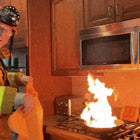 Fire
Fire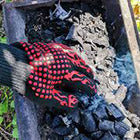 Safety
Safety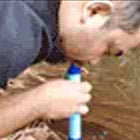 Survival
Survival Protection
Protection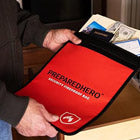 New
New
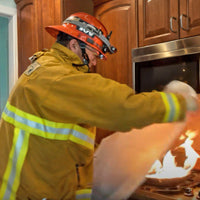 Fire
Fire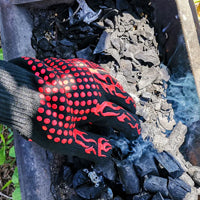 Safety
Safety Survival
Survival Protection
Protection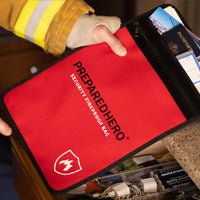 New
New
